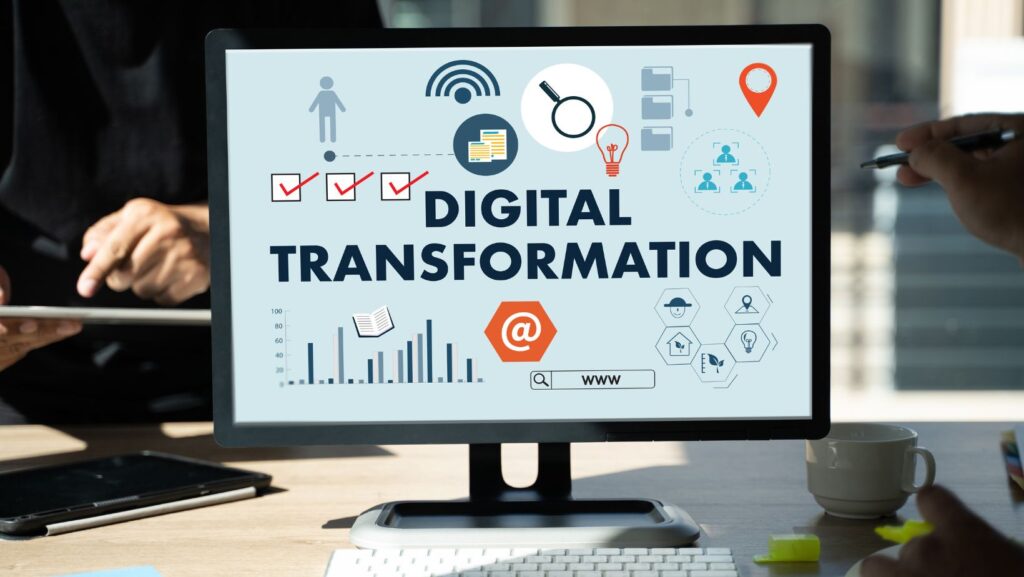
In the realm of education, digital transformation has emerged as a powerful force reshaping traditional learning methods. It’s revolutionizing how students engage with course materials, collaborate with peers, and interact with educators. With the integration of technology in classrooms, learning is becoming more personalized, interactive, and accessible than ever before. Educators are leveraging digital tools to create immersive learning experiences that cater to diverse learning styles and abilities. From interactive online platforms to virtual classrooms, the landscape of education is evolving to meet the needs of digital-native students. Embracing this shift not only enhances the quality of education but also equips students with essential skills for the future digital economy.
Digital Transformation In Education
The Concept and Its Importance
Digital-transformation in education refers to the process of integrating technology into various aspects of learning and teaching practices. It plays a crucial role in enhancing educational outcomes and preparing students for the digital-driven world. By leveraging digital tools and resources, educators can create more engaging and personalized learning experiences for students. This shift towards digitalization enables schools and educational institutions to adapt to changing technologies and deliver education in innovative ways.
Historical Perspective and Evolution
The historical perspective of digital-transformation in education dates back to the early stages of incorporating computers into classrooms. Over time, the evolution of technology has transformed the way students learn and teachers instruct. From basic computer labs to interactive whiteboards and online learning platforms, the journey of digital-transformation in education has been dynamic. This evolution has not only digitized traditional educational practices but also fostered a more interactive and collaborative learning environment for students.
Key Drivers of digital-transformation in education
Technological Advances

Digital-transformation in education is primarily driven by rapid technological advances. The integration of cutting-edge technologies such as artificial intelligence, virtual reality, and machine learning has revolutionized traditional teaching methods. These innovations enable educators to create immersive and engaging learning experiences that cater to diverse learning styles. By leveraging technology, educational institutions can enhance student engagement, facilitate personalized learning pathways, and provide real-time feedback to improve learning outcomes.
Changing Educational Needs and Expectations
Another key driver of digital-transformation in education is the shifting landscape of educational needs and expectations. As the job market evolves, there is a growing demand for graduates with digital literacy skills and the ability to adapt to a technology-driven workplace. To meet these demands, educational institutions are embracing digital tools and platforms to equip students with essential 21st-century skills. Moreover, the rise of remote learning and online education during the global pandemic has further accelerated the adoption of digital technologies in education, emphasizing the importance of flexibility, accessibility, and innovation in learning environments.
Challenges and Barriers
Resistance to Change

In the realm of education, resistance to change can be a prominent barrier to successful digital transformation. Educators, administrators, and stakeholders may be hesitant to embrace new technologies due to concerns about the disruption of traditional teaching methods, lack of training in using digital tools, or fear of technology replacing human interaction in the learning process. Overcoming resistance to change requires comprehensive professional development programs, clear communication of the benefits of digital tools in enhancing learning outcomes, and fostering a culture of innovation within educational institutions.
Infrastructure and Funding Issues
Infrastructure and funding challenges pose significant barriers to the implementation of digital-transformation in education. Many schools and educational institutions lack the necessary technological infrastructure, such as high-speed internet access, devices for students, and secure platforms for online learning. Insufficient funding for technology upgrades, training programs, and ongoing technical support further complicates the integration of digital tools in educational settings. Addressing infrastructure and funding issues necessitates strategic investment in digital infrastructure, seeking external funding sources, and developing sustainable financial models to support long-term digital transformation initiatives.



